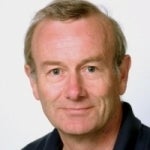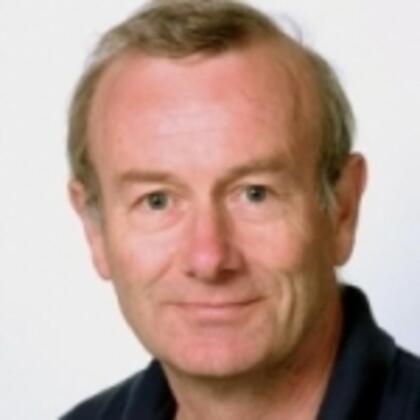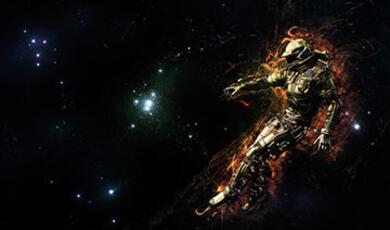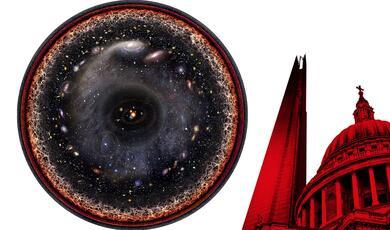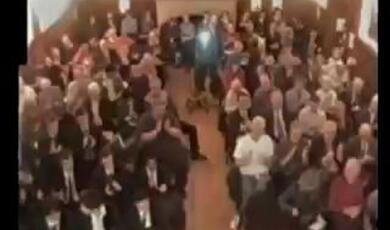Its Done with Mirrors
Share
- Details
- Text
- Audio
- Downloads
- Extra Reading
Why do mirros reverse left and right and not up and down (or do they!)? Why is mirror Asymmetry so important for life? Any why do some atomic processes seem to distinguish left from right? In this lecture Professor Close explores symmetry and asymmetry in the universe at large, from living things to atomic particles and beyond.
Download Text
Professor Frank Close OBE
Had it been possible to have placed bets at the dawn of time, what odds would have been offered against the emergence of life? Fifteen thousand million years later, we are here -complex systems of molecules that are self aware. Yet if the Creation had been perfect, as modem science believes, and its symmetry had remained unblemished, nothing that we now know could ever have happened: there would have been no you to read this nor me to have written it. How such a "pock speckled universe" has emerged from an unspoiled perfection at the outset is one of the biggest unanswered questions in modern physics; but one that may soon be solved. The world is an asymmetrical place full of asymmetrical beings. Life itself seems to thrive on a distinction between left and right. One in ten of us is left handed but otherwise we are superficially left right symmetric apart from self selected cosmetic asymmetry, such as the parting of one's hair.
Such symmetry is only skin deep. In vertebrates, the heart and stomach are on the left, the liver and appendix on the right, though one person in 10,000 has their heart in the wrong place, namely the right instead of the left. If the heart is on the "wrong" side, all the other organs tend to be also which can give surgeons a nasty surprise if they are not well prepared.
Whatever determines the orientation for one organ, determines it for them all. The mirror inversion is absolute. Somehow the original microscopic spherical embryo becomes chiral, left right asymmetric, the whole then choosing either the "standard" or the mirror version.
Many organic molecules have shapes that differ from their mirror images. While we cannot see molecules we can smell them. The left and right handed forms of limone distinguish the smells of oranges and lemons. Life differentiates between mirror images. The milk in Alice's looking glass would not have been fit to drink; one form of a substance may be digested as food while its mirror form is passed through unprocessed or even poisons the host. Amino acids and DNA in living things all go the same way, distinct from the mirror world: our amino acids are known as "left handed": life as we know it does not make use of the right handed analogues of these molecules.
Did this preference arise through evolution - a chance small excess being magnified over the aeons - or was it implanted even earlier? The discovery of left handed amino acids in meteorites suggest that left handedness was present in outer space maybe even before the Earth was born. The discovery of polarised light in the Orion nebula, which may be what our environment was like 5 billion years ago, has led to the theory that the right handed forms were selectively destroyed by bombardment from polarised light at the dawn of the solar system.Mirror symerntry is profound and often confusing. I shall explain it in the talk but here is a summary to whet your appetite.
We have the common impression that mirrors invert left and the right.
But then of course someone says, why don't we invert up and down? And then you say, well go and lay on your side, and then mirrors do invert up and down, but then they don't invert left and right anymore. This is of course completely false: suppose everybody was born in a bizarre harlequin suit with red on the right and blue on the left.
Now if we are all like that, this strange idea that mirrors invert left and right would never have come about, because if you go and look in a mirror at yourself, you will see somebody with red on the left and blue on the right - which is a person that does not exist. If the only people that exist are harlequins of this type, the mirror image will show a person that does not exist in the real world. This confusion of left and right inversion would never have arisen. In fact, we are harlequins. And that's one of the points I want to bring out. This is a fact that is well known to biologists and chemists, the fact that physicists were surprised by this forty years ago, well that should tell you something about us. Let me show you a photograph of me which is clearly asymmetrical because my hair is parted on one side, and then I show two other photographs of someone that look similar to me and yet somehow is not me.
The point about these images is that if I flip them over you'll see that they are completely symmetrical. Why these pictures actually are is that one of them took the right half of my face, and mirror inverted it to build a completely symmetrical image while the other took the left half of my face and mirror inverted it to build a completely symmetrical image of that. The real face is completely asymmetrical. So actually I, and I would hate to say you all are harlequins. As we saw above,about one in ten is left handed. About one in ten thousand people have their internal organs mirror reversed and what is absolutely true, is that once you get to molecular level, the amino acids, the DNA of everyone, has one-handedness. The mirror forms do not exist in living form. So we are, at the molecular level, completely harlequins. And so, as I said, chemists who have been used to molecules and their mirror images for years, are quite happy with the idea that the worlds behind and in front of the mirror can be different. In the next talk we will discover that some basic processes at the atomic level are intrinsically mirror asymmetric and seem to give an absolute distinction to left versus right.
(And for that lecture, and this, the images from Escher can be found in my book Lucifer's Legacy and at http://lhcb-public.web.cern.ch/lhcb-public/html/fccp.htm). Asymmetry is everywhere, and possibly life could not have arrived without it. Even given the existence of the amino acids, their ability to build the complex proteins and DNA that are essential to life depend on very fundamental asymmetries without which the Sun would not still be shining. It has taken 5,000 million years of sunlight for the chemical and biological processes of life to have been energised here. Asymmetry has been essential to this. We have begun to realise this only in the last few years and are now trying to understand how it came about. It is one of the major inspirations behind the building of the LHC (Large Hadron Collider) accelerator at CERN - construction of which is now going full steam ahead following the closure of its predecessor, LEP, at the end of November 2000.
That the sun has lasted this long is due to the fact that the arcane "W" particle has a mass greater than an atom of iron. This W beast is the quantum bundle of the "weak" force that helps power the Sun. Had it been massless, like the familiar photon that plays an analogous role for the electromagnetic forces, the Sun would have burned out long ago (or may never have formed at all). This is but one of many examples where mass, some particles having large amounts while others have small or even none, creates asymmetries that appear critical to existence. For example, most of the mass of an atom resides in its central nucleus while tiny lightweight electrons flow from one atom to another; liberated as current they flow through wires and power modern industry; agitated by electric fields they radiate electromagnetic waves. It is these negatively charged electrons that communicate and drive the biochemical processes in living things while the positives, too heavy to be easily stirred, tend to stay at home and form the templates of solidity.
Scientists believe that it is mass that is the seed of asymmetry, perhaps even of all asymmetries in the universal scheme of things. It is their differing masses that helps give many particles their distinct identities. The mathematical patterns that are emerging among these masses suggest to some theorists an explanation even for how matter defeated antimatter thereby giving a chance for something rather than nothing in the universe. So far these are ideas, written on paper, and it is experiment that will show if the universe is really like that. At CERN today scientists and engineers are building the Large Hadron Collider, LHC, a time machine that will try to recreate what the universe was like in its first moments, before mass had obscured its natural symmetry.
We can anticipate dramatic revelations from the LHC within less than ten years. The tantalising prospect is dawning that we will be able to see for the first time the ultimate foundations of reality, because scientists believe that when the true symmetries of Creation are known, the way that Nature spoiled these symmetries will also become clear. These experiments may reveal a singular source of all asymmetry. And if they do, will they confirm the the remarkable insight of Pasteur who in 1860 said: "The Universe is asymmetrical. Life is dominated by asymmetrical actions. I can even imagine that all living species are primordially in their structure and in their external forms, a function of cosmic asymmetry". Extensive reading about all of this and the important images, are in my book Lucifer's Legacy - the meaning of asymmetry (paperback edition coming out in March from Oxford Univ Press) - see also the Gresham Website http://www.gresham.ac.uk/astronomy where you can order it direct from Amazon and help Gresham get a commission.
© Frank Close, Gresham College, 2001
This event was on Tue, 13 Feb 2001
Support Gresham
Gresham College has offered an outstanding education to the public free of charge for over 400 years. Today, Gresham College plays an important role in fostering a love of learning and a greater understanding of ourselves and the world around us. Your donation will help to widen our reach and to broaden our audience, allowing more people to benefit from a high-quality education from some of the brightest minds.


 Login
Login
